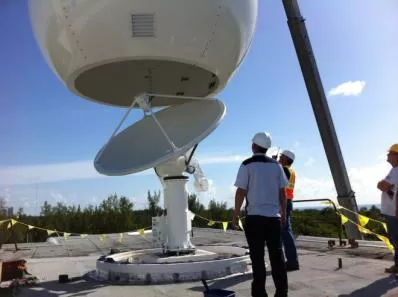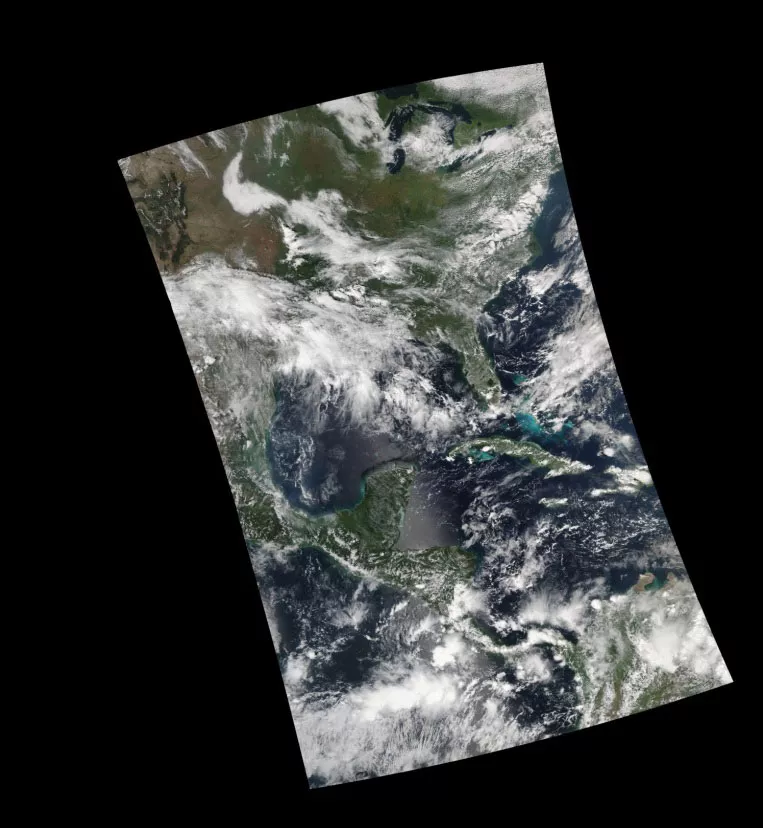Latest Antenna to Directly Receive Suomi Npp Polar Satellite Data Now Installed
As severe storms grow in frequency and cost, it is essential that weather forecasts continue to become even more accurate and timely. Polar-orbiting weather satellites provide data that enables forecasters to make more accurate predictions which can help save lives and protect property. On September 17, the Cooperative Institute for Meteorological Satellite Studies (CIMSS) installed a direct readout ground station at the NOAA Atlantic Oceanic and Meteorological Lab (AOML) in Miami, which will now receive data from polar-orbiting weather satellites as they pass overhead.

NOAA Atlantic Oceanic and Meteorological Lab in Miami, Florida. Credit: CIMSS
The Miami antenna is the 5th of six new polar satellite direct broadcast reception sites funded by the Disaster Relief Appropriations Act of 2013—commonly referred to as the Sandy Supplemental—to be completed. These sites are capable of receiving data from the sophisticated instruments on the NOAA/NASA Suomi NPP satellite as well as data from Japan Aerospace Exploration Agency’s (JAXA) Global Change Observation Mission-Water, all NOAA Polar-Orbiting Environmental Satellites, European Organisation for the Exploitation of Meteorological Satellites (EUMETSAT) Meteorological Operational (MeTOP) satellites, NASA Earth Observing Satellites, and all future Joint Polar Satellite System (JPSS) satellites.
The antenna network is comprised of sites in Alaska, California, Florida, Hawaii, and Wisconsin which cover all of North America providing reliable data to NOAA’s National Center for Environmental Prediction. A future antenna site will be installed in Puerto Rico. JPSS uses the Disaster Relief Appropriations Act of 2013 funding to drive activity aimed at mitigating the impacts of a potential gap in environmental polar-satellite data. For example, the direct readout antennas will accelerate the speed with which forecasters receive data from the EUMETSAT MeTOP satellites when they pass overhead.
“This new satellite data reception and processing system is designed to meet important performance requirements without expensive maintenance in extreme weather conditions and provide accurate and reliable positioning,” said Mitch Goldberg, PhD., JPSS Program Scientist. “Having this network of antennas in place will expedite the delivery of critical data to our National Weather Service partners, thereby accelerating their forecasting capabilities.”

First VIIRS true color imagery from the new direct readout station at AOML in Miami, Florida. Credit: CIMSS
Given the Miami antenna’s close proximity to the NWS’s National Hurricane Center, tropical cyclone forecasters will have more rapid access to data that will enable them to forecast the hurricanes and tropical cyclones that frequent the Gulf and Caribbean areas. Atlantic Oceanographic and Meteorological Laboratory (AOML) will work to provide access to their data for the NWS Weather Forecast Office. This will allow them to evaluate the conditions for their local weather challenges and adjust their forecasts accordingly.
Data from Suomi NPP and future JPSS satellites could help coastal areas better prepare for storms like Tropical Storm Isaac. When Tropical Storm Isaac traveled across the Caribbean Islands in August 2012, it produced heavy rain and flooding. Prior to making landfall in Louisiana, Isaac intensified into a Category 1 hurricane with tropical storm force winds that severely affected the Florida Keys and South Florida. Hurricane Isaac’s destructive path caused $3 billion in damages, affecting 59,000 homes as well as a substantial loss in crops and livestock. Data from satellites like Suomi NPP satellite can help provide the early warnings that enable decision makers and emergency managers to provide public warnings, thereby reducing the potential loss of human life and property.
Direct broadcast antennas will continue to be a core capability to provide the data needed to meet the nation’s environmental challenges. The new Miami antenna will provide an additional, vital, data source for the global database that is incorporated into our Nation's essential decision-making products to help secure a more "Weather-Ready Nation."
To learn more about the Cooperative Institute for Meteorological Satellite Studies, visit http://cimss.ssec.wisc.edu/.
